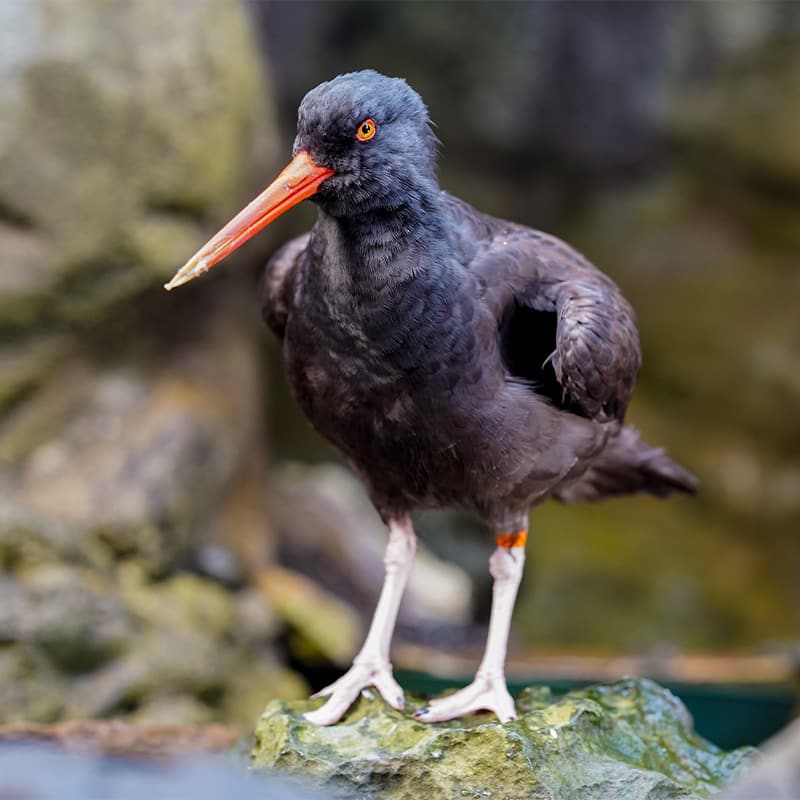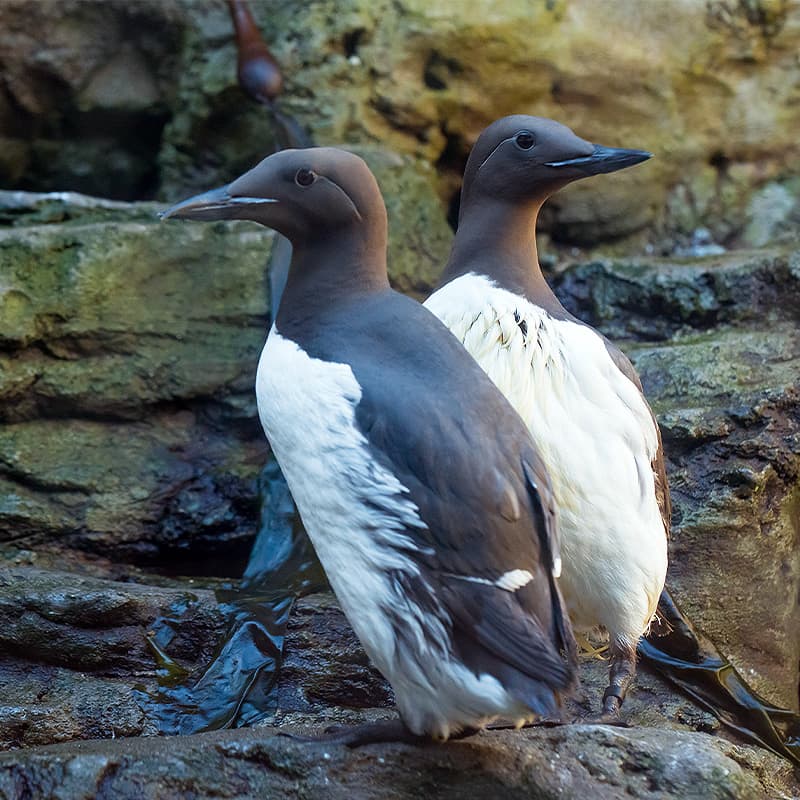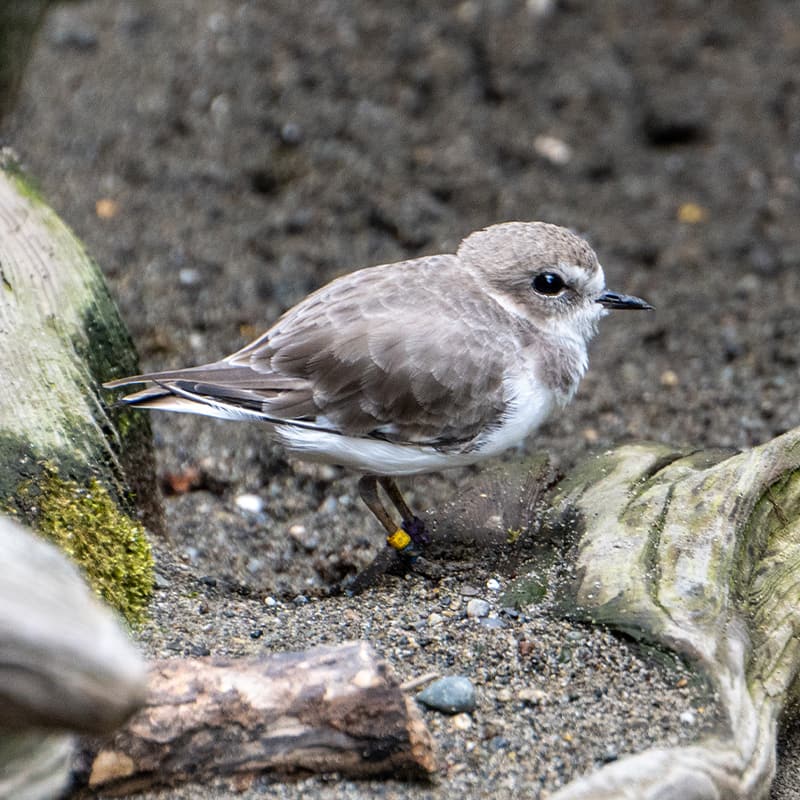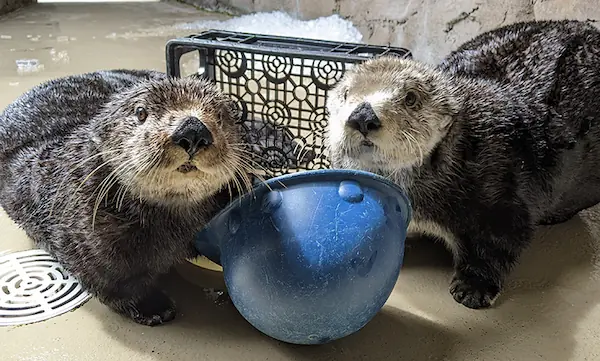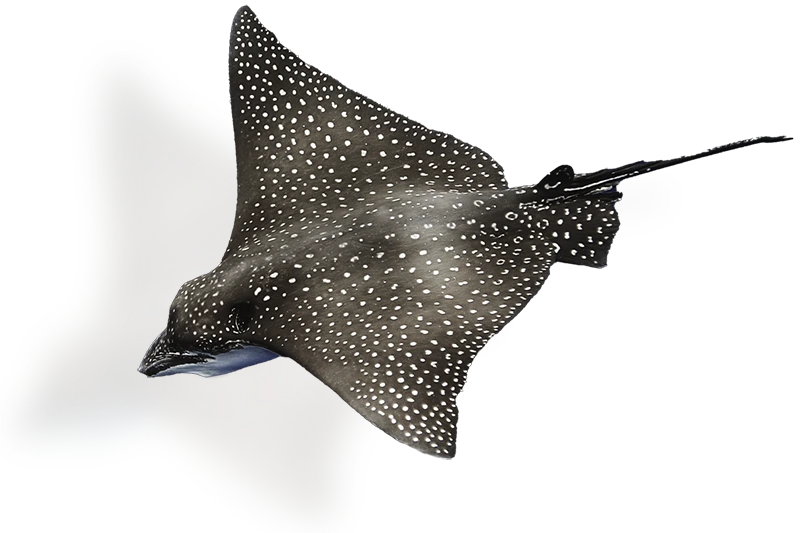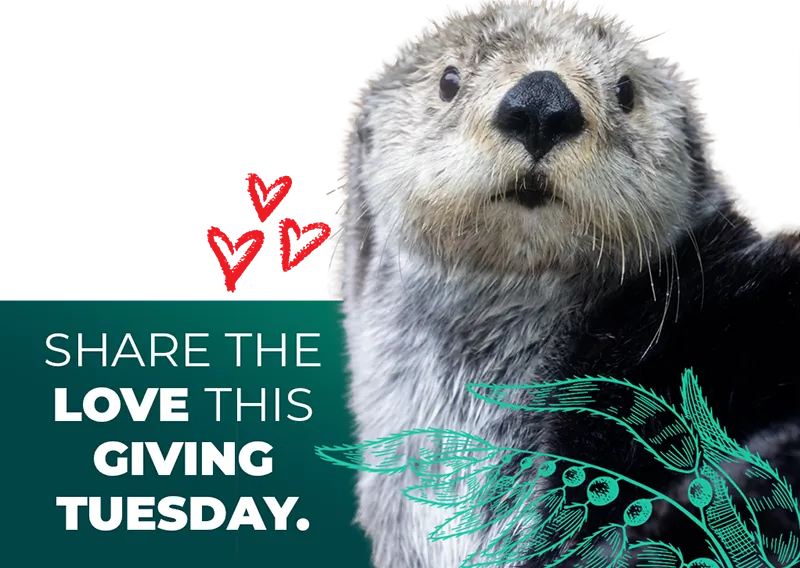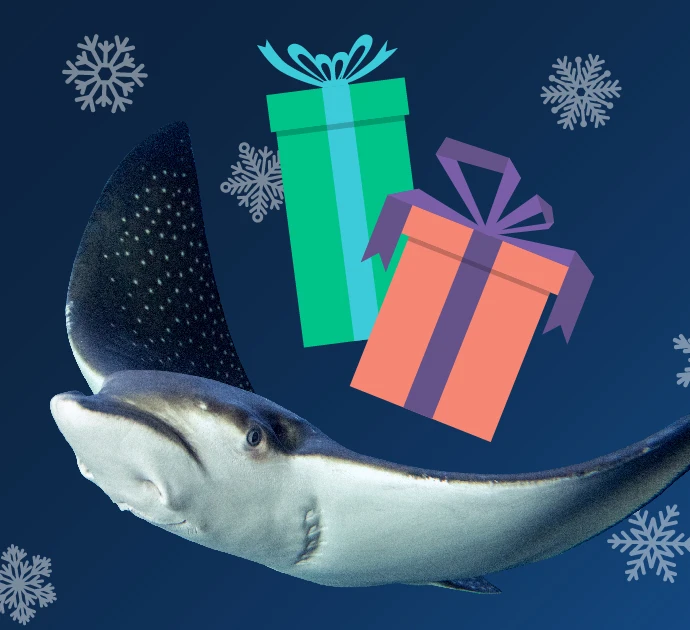- Birds
Rhinoceros auklet
The misnamed bird
Rhinoceros auklets are actually not members of the taxonomic group of birds known as auklets—rather, they are closely related to puffins. They’re found on the open sea and coastlines of the northern Pacific Ocean, from Baja California to the Aleutian Islands in North America and in small areas of Japan, North Korea and Russia.
At the Aquarium
- Bird habitats, Pier 60
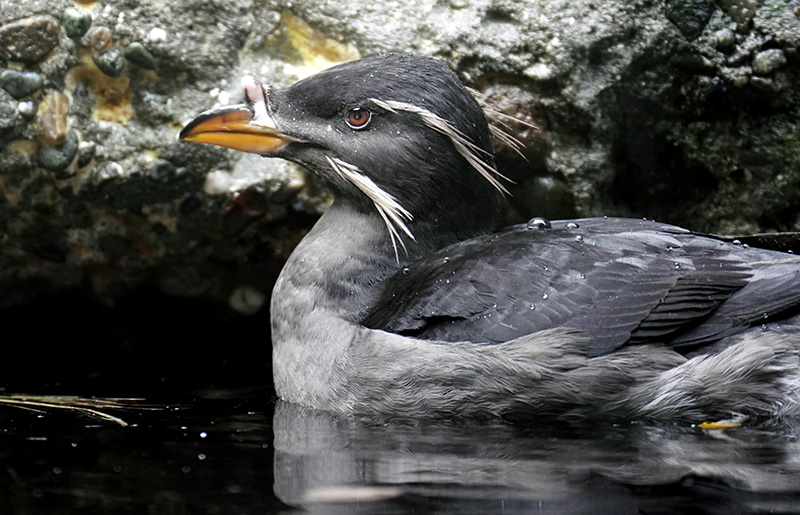
A life at sea (most of the time)
Rhinoceros auklets are mostly pelagic, which means they live on the open ocean and return to shore only for breeding. During breeding season, they nest in colonies, digging shallow burrows into the soil or finding naturally occurring cavities along rocky shorelines.
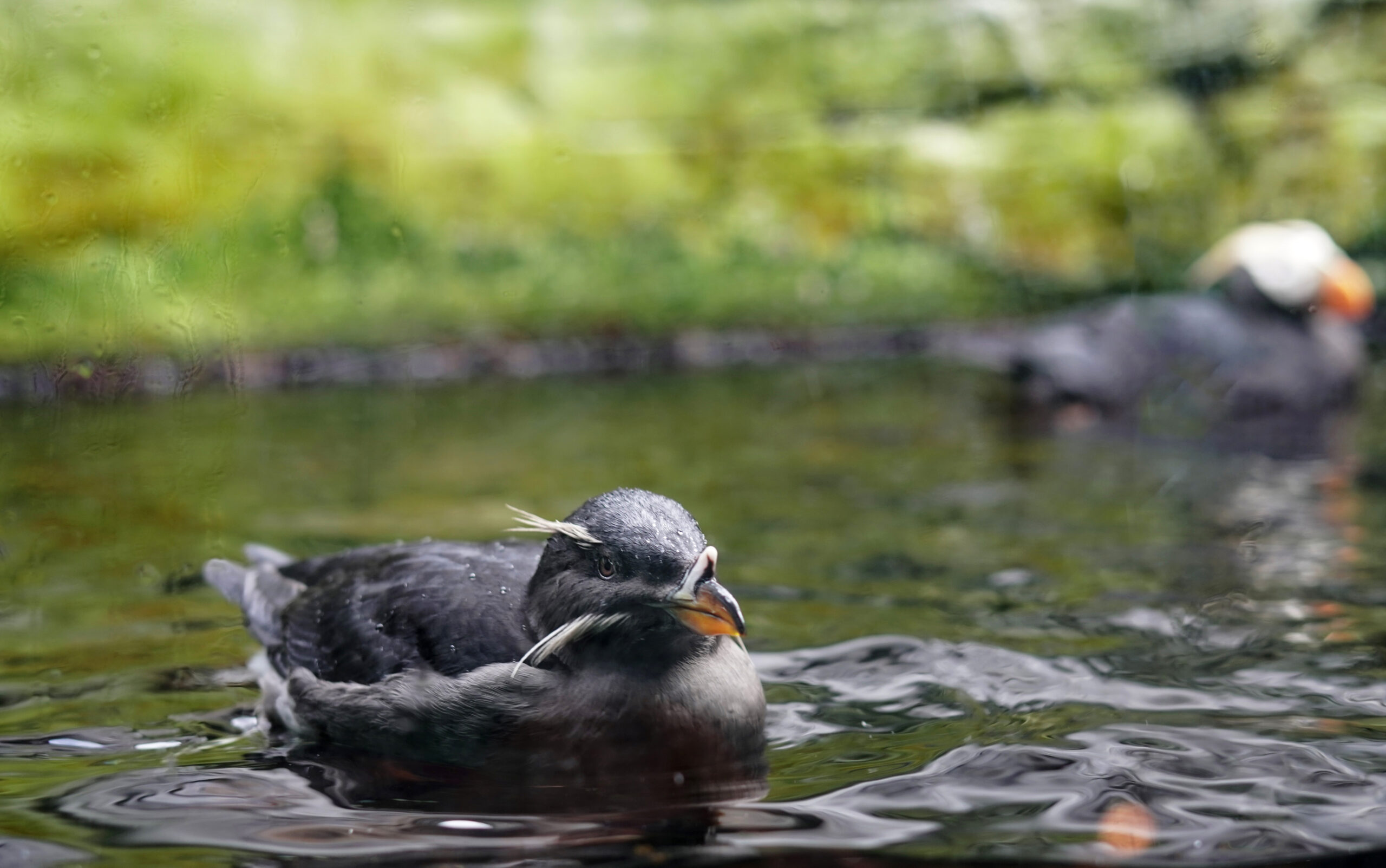
Better divers than fliers
Like all auks, rhinoceros auklets are diving birds. They use their sturdy wings as flippers, swimming up to 180 feet below the surface in their search for prey and remaining submerged for up to two-and-a-half minutes although most dives are much briefer and shallower. Their diet consists primarily of small fish, but they may also dine on crustaceans and cephalopods (squid). The wings that serve rhinoceros auklets so well in the water are less suited for graceful flight—in fact, research suggests that these birds may prefer to nest on sites that are slanted toward the water for easier takeoff.
And baby makes three
Female rhinoceros auklets lay a single egg, which is then cared for by both parents for the approximately 45-day incubation period. Parents take turn delivering fish to their chick after it hatches; these deliveries take place primarily at night, a behavior that is believed to be an adaptation to keep gulls and other birds from stealing the chick’s meal. As night falls, adult rhinoceros auklets can sometimes be seen bobbing in the water with bills full of fish, waiting until it’s dark to return to the nest and feed their chicks. Chicks are cared for by their parents until they’re about 7 weeks old.
Help care for rhinoceros auklets
While rhinoceros auklets are a designated as a Species of Least Concern by the International Union for Conservation of Nature (IUCN), their populations are declining and they are still vulnerable to human-caused hazards such as oil spills and pollution. When you care for our marine environment, you’re also caring for rhinoceros auklets—in the northern Pacific Ocean, and even along the shorelines of Puget Sound!
Quick facts
Rhinoceros auklets have a protruding white “horn” during breeding season!
These birds can dive up to 180 feet below the water’s surface.
Parents deliver food to their chicks at night to avoid predators.
